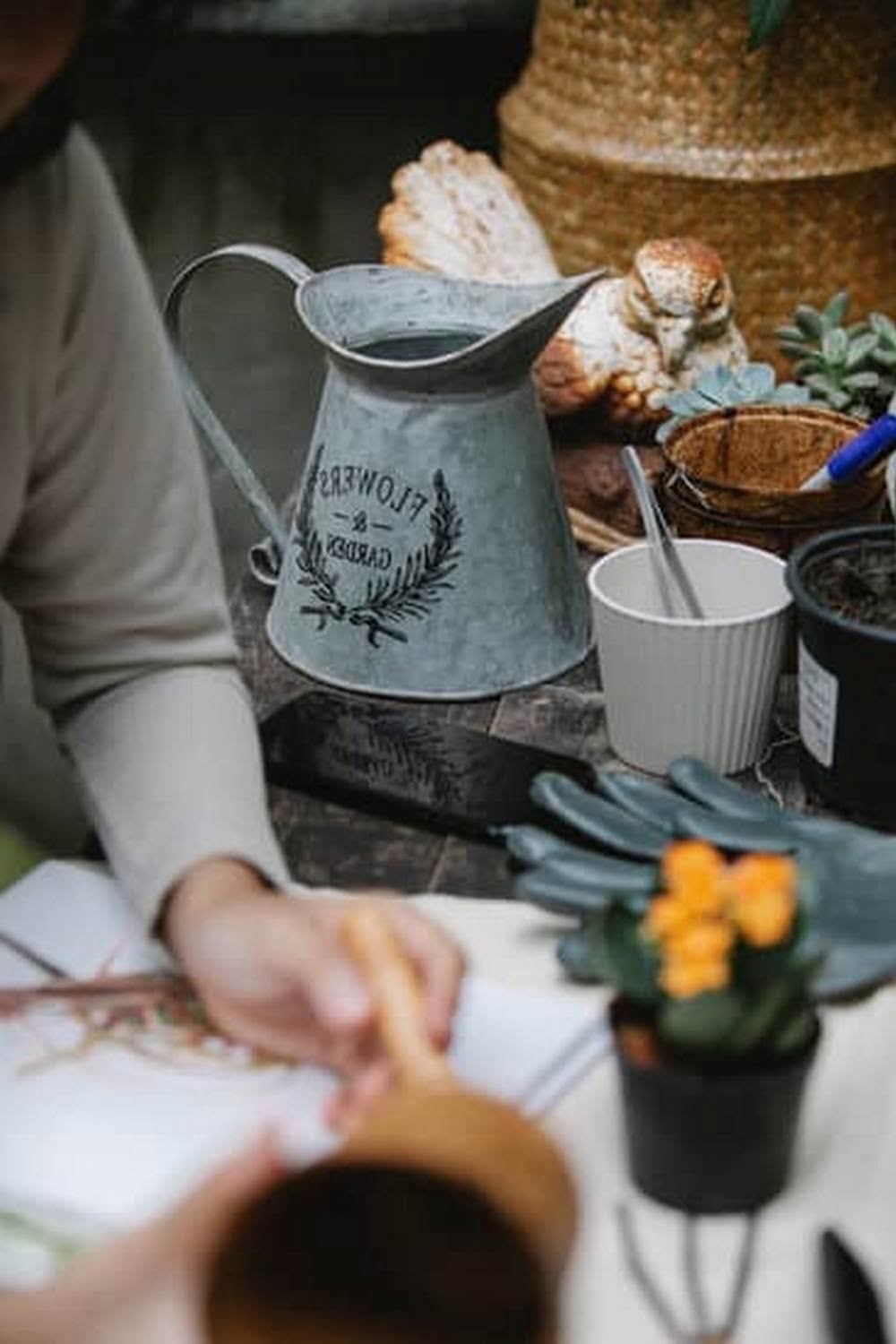Introduction
Mulching vegetable gardens is a great way to protect and nourish the soil in your garden. Mulching helps to retain moisture, regulate soil temperature, discourage weeds from growing, protect from pests and disease, and even add valuable nutrients to your soil when done correctly. It is an important task for any vegetable gardener who is looking to get the most out of their garden. Here are some tips to help you get started on mulching your vegetable garden properly.
First off, decide what type of mulch will work best for your garden. There are several types available such as bark chips, pine needles, grass clippings, straw, and composted manure. Each type has its own benefits so be sure to research which one would be best for your specific needs.
Once you have chosen the material you want to use it is important that you prepare it properly by removing large clumps or breaking them up into smaller pieces if needed. Make sure that all materials used are organic and free from pesticides or chemicals that could be harmful to your vegetables.
Next comes application time! Start by applying about one inch thick layer of mulch directly around plants in a 3-foot radius area but ensure that it does not come in contact with the stems of any plants as this may cause damage or deprive them of oxygen. Water should be allowed to penetrate through the mulch so do not make it too thick or dense at any point otherwise water will be unable collapse it; meaning over water can drowns plant roots while too little water can result in dryness or burning sensation on the leaves.
Finally, keep an eye on your mulch during the summer months as heavy exposure to long periods of sunlight mean most mulches need regular reapplication at least once every few weeks; topping up old spots with fresh material while also keeping an eye out for pests and diseases like aphids which love damp environments and can quickly destroy your young veggies if left unchecked – making regular monitoring critical!
Types of Mulch and Choosing the Best Fit for Your Garden
When considering mulch for your vegetable garden, it’s important to choose the type of mulch that best fits your particular situation. Some popular types of mulch include straw, grass clippings, bark chips and hay. All of these can serve as great additions to a vegetable garden; however, each offers unique benefits according to the situation.
Straw is often used in vegetable gardens because it helps keep moisture in the soil, prevents weeds from coming up, and maintains a temperature balance in the soil. It also helps provide more humus and beneficial bacteria that help plants grow. Grass clippings are another type of mulch which helps reduce water loss due to evaporation and can provide extra nutrients for plants. Furthermore, they break down quickly so they need to be replenished often.
Bark chips are an effective way to suppress weed growth while keeping moisture in the soil at the same time. In addition, they retain their color better than other types of mulch which is ideal if you want to keep your garden looking neat and tidy for long periods of time. Hay is another popular option for mulching vegetable gardens as it does not allow light into the soil which hinders weed growth. However, this option should be avoided if there are any signs of mold or mildew on the hay as this could harm your plants.
No matter what type of mulch you choose for your garden, it’s important to apply it correctly and water regularly in order to ensure healthy plant growth. Additionally, adding a layer of compost every season will further enrich the soil with beneficial organisms and organic matter that helps plants flourish over time!
Preparing the Soil
Before mulching your vegetable garden, it’s important to take some time for preparing the soil. The most important thing to do is to make sure that proper drainage is achieved, as this will help prevent water from stagnating and potentially damaging the vegetables. This can be done by tilling thoroughly with a good quality soil amender. Once this is complete, it’s helpful to add a layer of compost over the top of the soil and mix it in using a rake. This will naturally improve nutrient levels as well as drainage in the soil.
Once the soil has been adequately prepared, you can begin the mulching process. There are several types of mulch that can be used in a vegetable garden such as straw, grass clippings, leaves, and wood chips. Depending on what type of crop you are growing, you may wish to choose a particular type of mulch accordingly. Wood chips are great for heavy crops such as tomatoes and squash due to their higher insulating properties, whereas other types of mulch can provide adequate coverage for lighter vegetables like lettuces and spinach.
Once you have chosen your preferred type of mulch, apply it over the area where you would like to plant your vegetables – leaving no bare ground uncovered. Make sure all areas around plants have at least an inch or two (2-5 cm) layer of mulch on them so that moisture does not immediately evaporate from their roots once watered. Be careful not to spread the mulch too thickly as this may lead to excessive heat which could result in roasted crops! Water regularly throughout dry spells in order to ensure that crops are thriving under your new layer of protective material.
Applying Mulch to the Vegetable Garden
Applying mulch to your vegetable garden is a great way to keep the soil moist and protected from weeds. But it isn’t as simple as just dumping some mulch onto your beds, there are a few best practices for laying down mulch that will maximize its effectiveness and ensure your vegetable garden stays healthy.
The first step in applying mulch is preparing the soil. To get the most benefit from mulching, turn over the top few inches of soil with a shovel to loosen it up and make sure any weeds are removed. Then lay down a layer of organic material such as compost or manure, which will help retain moisture and add valuable nutrients to the soil.
Once this is done, you can begin laying down the actual mulch. Start at one side of the bed and work your way across, spread an even layer that is 2-3 inches deep. Be sure not to suffocate plants by covering them with too much mulch – make sure there’s enough space around each plant so air can still circulate correctly. You should also avoid piling up the mulch against tree trunks or shrubs; doing so could lead to rot or pest infestations over time.
Finally, water your newly-mulched areas regularly to ensure moisture retention deep within the soil layers. The extra water should motivate seeds or seedlings whose germination process has been hindered by hot weather or dry spells, helping you be on your way towards a beautiful and nourishing harvest!
Design Considerations for Applying Mulch to the Vegetable Garden
When deciding how to mulch a vegetable garden, it is important to take into consideration different mulching materials and their specific benefits. For example, organic materials like grass clippings, leaves, compost and shredded bark offer excellent weed suppression and soil fertility through the addition of valuable nutrients. Additionally, these materials help maintain moisture in the soil. Inorganic materials such as black plastic can control weeds more effectively and also help warm up the soil faster in cool climates, providing an earlier start for spring planting. Pebbles and stones are often used to define garden paths or edging between beds while also retaining moisture and suppressing weeds.
Before applying any mulch or stone material to your garden, it is important to take into account aspects like depth, coverage areas and spacing between plants. Organic mulches should never be deeper than 4 inches so that they don’t suffocate the soil organisms essential for decomposition processes; some shallow application may be necessary during times of excessive rainfall or heat waves. Additionally, when laying out stone paths or edging for your vegetable garden it is best to leave a significant gap between them and adjacent plants; this allows space for adequate airflow that helps prevent insect infestations or disease outbreaks from spreading quickly across the whole garden site. Finally all organic residuals must be spread evenly; too much concentration can cause depletion of available oxygen levels in the beds diminishing plant health.
Tips and Tricks for Optimal Mulch Retention
Mulching your vegetable garden is one of the best ways to help retain moisture and limit weed growth. There are a few tips and tricks that can help you apply the mulch properly for optimal retention.
Firstly, it’s important to choose the right type of mulch for your garden. Options include straw, grass clippings, shredded bark and compost – each has a different amount of water retaining ability and their effectiveness should be considered when making your choice. If you can get organic matter like tree bark or fallen leaves, this will provide nutrients benefits as they decompose while helping retain moisture.
When applying the mulch to your vegetable garden it’s important to spread it evenly throughout all areas. Generally speaking an inch or two deep is ideal but may need to be slightly deeper around newly planted areas forming a small nest for protection during cold spells. It’s also important not to let the mulch touch any plants directly as this can increase fungus problems. Leave at least three inches between the plant stems and the mulch.
Mulching can also help keep soil temperatures relatively even from day-to-day, reducing potential damage from sudden swings in temperature which could otherwise shock young plants grown from seedlings or transplants. Applying mulch around seeds planted about 1/4-inch deep helps warm up soil more quickly compared with untreated soil so it’s a good idea to add some to new beds before sowing in early spring if possible.
Finally, if using wood chips or other coarse material make sure these are cured first before applying them around vegetables as they tend to tie up nitrogen as they break down over time – affecting plant health long term unless well managed with additional fertilizers.
Common Mulching Mistakes to Avoid
Mulching a vegetable garden can provide multiple benefits, such as helping the soil retain moisture, suppressing weeds, and even insulating plants from extreme temperatures. However, some people make a few common mistakes that prevent these benefits.
One mistake is applying mulch too thickly — usually 2 to 4 inches is recommended, but over-mulching can reduce the amount of oxygen in the soil and create an environment where pathogens thrive. It’s also important to ensure that organic materials used for mulching are fully decomposed first — when woody material has not broken down completely it increases the risk of disease. Additionally, be sure the mulch is applied away from plant stems to keep them dry and avoid rot. Lastly, it’s important to use materials that do not contain herbicides or chemicals as those can cause extremely harm your vegetable plants.
Now that you know how to properly mulch a vegetable garden, focus on avoiding these common mistkaes for optimal results! Properly mulched gardens will be more likely to yield successful harvests that are healthy and full of delicious vegetables!
Mulch Maintenance Tips for Long-Term Care of Your Vegetable Garden
Mulching is a great way to keep your vegetable garden healthy and productive. The purpose of mulching your vegetable garden is to help retain moisture, improve fertility, and control weeds. To begin mulching, gather quality organic material such as shredded leaves; chopped straw or grass clippings; compost; or chips of bark or wood. Spread the mulch around plants in a 2-3 inch thick layer evenly across the area of your garden where vegetables are planted. Make sure to leave enough space between plants for air circulation and light. Try not to cover lower leaves with mulch, as this can hinder photosynthesis and ultimately affect growth.
To keep up with maintenance of your mulched vegetable garden, you should check it periodically for any signs of weed growth. Weed seeds may be spread by wind and birds that drop them from above so it’s important to be diligent about pulling out any manual weeds that appear before they start competing with the plants for resources like soil nutrients, water and sunlight. Additionally, reapply additional layers of fresh mulch if necessary as it tends to decompose over time. Finally, poke some holes into the soil underneath the mulch surface every few weeks; this will allow oxygen and water to get down more easily into the root zone of your plants. Following these tips will help ensure that your vegetable garden remains healthy and productive year round!
Conclusion
Mulching your vegetable garden can have many great benefits. Mulches help conserve moisture, reduce erosion, suppress weeds, moderate temperatures and protect crops from pests. Not only that, but mulches can improve the appearance of your garden when used in combination with visually appealing materials such as wood chips, bark or cocoa bean hulls. With the right preparation and installation, you will be able to reap the rich rewards mulching offers your vegetable plots all season long.

If you’re looking to get into vegetable gardening, or are just looking for some tips on how to make your current garden better, then you’ve come to the right place! My name is Ethel and I have been gardening for years. In this blog, I’m going to share with you some of my best tips on how to create a successful vegetable garden.





